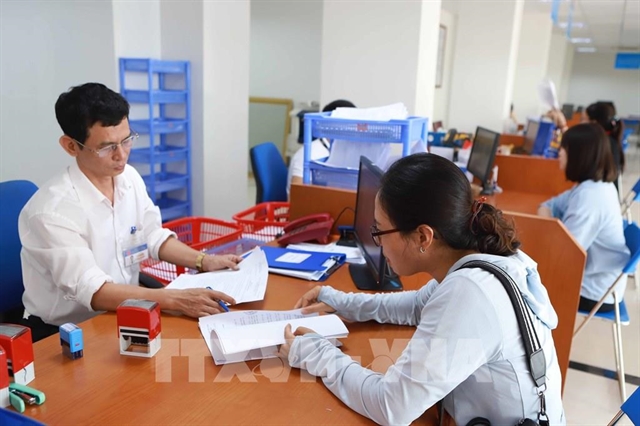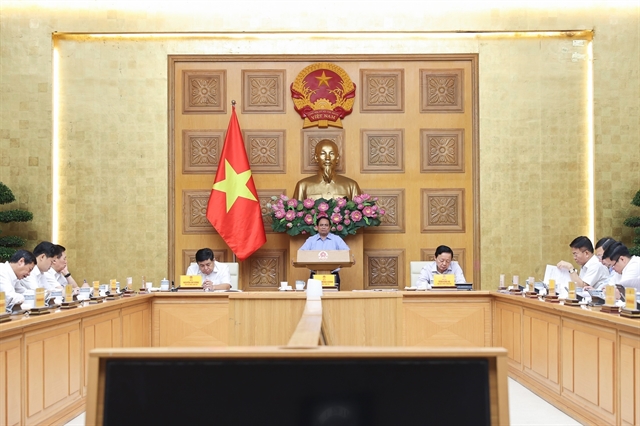

Today, consumers demand perfect network performance as they are spending increasing amounts of time online. The COVID-19 pandemic has heightened the demand for 5G. Many operators launching 5G are starting to take the opportunity to offer value-added services to consumers, beyond data and speed. Denis Brunetti, president of Ericsson in Việt Nam, Myanmar, Cambodia, and Laos, talks about how 5G will benefit consumers and provide an opportunity for carriers to maximise their revenue.
How will 5G benefit Việt Nam economic development?
As we know from the past, Việt Nam's economy has grown phenomenally over the last 30-40 years. When you look back in time, obviously a lot of that was driven by foreign direct investment (FDI) geared around low cost, labour intensive and low skill manufacturing, and of course, agriculture as well. Those economic sectors predominantly have accounted for 40 per cent of the GDP for the most part. Then, of course, a lot of FDI came in from countries all around the world, including from Europe, amounting to about US$350 billion worth of foreign direct investment since 1991. That really fueled the old economy and gave Việt Nam socio-economic development, which I think is extremely high in terms of GDP growth rates every year, compared to many neighboring ASEAN countries, an average of 6 per cent. Over the past 20 years, for example, even last year, the GDP growth was at 2.9 per cent, which was one of the few countries in the world that had positive GDP.

|
Denis Brunetti, president of Ericsson in Việt Nam, Myanmar, Cambodia, and Laos
But the next wave of socio-economic development , the Government recognizes and Ericsson fully supports, will come from innovation, science and technology, driven by the digital economy, through data. Data will become the new oil that fuels the engine of growth, which is the internet and the digital economy. And 5G in that world serves as the critical national infrastructure. In the past, ports, seaports, airports, tunnels, roads and bridges were all very important physical infrastructure to help countries prosper, but moving forward, 5G will be just as important. Increasingly, countries recognize the need for digital infrastructure. 5G really is the bedrock, the foundation, the enabler for the digital transformation of industries as well as society. Unlike its 4G and 3G predecessors, 5G is very much geared towards enterprise and industry as much as consumer digital transformation. So it's not just about consumers becoming digitally enabled. But certainly, it's going to be more about industry use cases, the internet of things (IoT), robotics and cloud robotics in manufacturing, as well as in transport, healthcare, energy and mining. All industries will grow and become more efficient, productive and prosperous through digital transformation. Countries like Việt Nam recognise that. And the Government has done a great job.
So you need a 5G innovation platform to help drive, really motivate and inspire companies that are bringing R&D to Việt Nam. For example, there are many companies now including Qualcomm, Samsung and many others that are doing or starting to do R&D in Việt Nam. A lot of that work in the coming years will be driven by 5G as an enabler.
IT connectivity has become one of the most important indicators of the modern consumer experience, especially during the COVID-19 pandemic. How will consumers benefit from 5G?
Yes, 5G like 4G will provide mobile broadband connectivity, so we can work and study from home online.
With 5G, you have the ability for fixed wireless access. You can get almost like a fixed-line, fibre-optic speed, bandwidth capable connection. Instead of having a fibre connection to your home or to your apartment, it's connected by mobile. The 5G interface effectively is as fast and as efficient, reliable and secure as a fixed fibre-optic connection, mobile fixed broadband connection. That's important because that replaces WiFi, which is less secure, lower speed and less reliable.
With 5G, consumers will be able to work and study from anywhere. I think that's been a big lesson from COVID-19. People have been able to do that, thanks to 4G, but increasingly countries that have embraced 5G are able to do that even more efficiently. And of course, today, we have so many people using so many connected devices. But moving forward more people, machines and devices will be connected to a mobile network and 5G due to its increased capacity that can be connected to the network. So the actual density of connections is higher in 5G than 4G and of course, super-low latency, which obviously is very good for gaming and other multimedia and immersive experiences. It's also important from an industry perspective for manufacturing and mining and other critical type applications in industry, as they require a very low latency of one millisecond compared to 10 milliseconds or 100 milliseconds which we see in 4G. This goes down to one millisecond in 5G, latency which enables remote robotics or surgery to happen. All those types of applications benefit from 5G.
5G will give us a better experience both in terms of consumer and enterprises, but it will also make it easier during periods like COVID-19. For example, for more people to be working from remote locations, more efficiently than ever before. So I think we've seen an example that is the pandemic period, of course, but it will become increasingly important over time, we know that for sure.
There are monetisation opportunities for service providers to create an entire 5G ecosystem of integrated services. What should Việt Nam prepare for its 5G commercial roadmap and how will Ericsson support it?
Service providers already offer consumer mobile broadband services to the population in Việt Nam. So that's already a benefit for them. But they now see increased revenue streams coming from IoT, enterprise and industrial type applications. We see VNPT, Viettel, Mobifone, with their 5G commercial trials, for example, focusing not only on urban areas like Hà Nội and HCM City, but also Vĩnh Phúc and Bắc Ninh Province. So in these industrial zones with a lot of manufacturing, there's a focus on 5G deployment because clearly, that's where we see industry benefiting from 5G through smart manufacturing and Industry 4.0. That's where we see the operators gaining increased revenues moving forward. Currently, it's obviously very humble numbers, very modest numbers, because it's on a commercial trial scenario.
But eventually, when the 5G spectrum is licensed and the operators roll out 5G across Việt Nam, the 5G deployment, leveraging 4G, by the way, in many cases, because thankfully, with Ericsson, we have our Ericsson radio system, which was deployed across Việt Nam with all the operators, which can easily be upgraded seamlessly with a software upgrade remotely to 5G. Even in many cases, leveraging and utilizing the existing spectrum, both for 4G and 5G called the Ericsson spectrum sharing where you can actually use spectrum for 4G and 5G concurrently. So those type of features allow for a very easy smooth transition to 5G moving forward. But then you've got the standalone 5G as well, which we will be deploying for specific uses across different industries.
That will enable increased revenue streams for the operators. So operators will gain not only from improved consumer revenues, because more consumers will be using 5G, but also usage time will increase. Across Southeast Asia, we see the number at 4.7 Gb per person a month, moving across 25 Gb per person a month by 2025. That will happen in Việt Nam as well. We're seeing already today through our consumer lab studies what consumers are doing and how they're using 4G and 5G applications. We're seeing that, on average, 5G consumers are using computer gaming or cloud gaming two or three hours per week more with 5G than they did with 4G. Also in media streaming, music and immersive applications, we're seeing people utilising 5G more than they did 4G. This means consumers will consume more mobile data. That means that they will obviously generate more revenue for operators through the increased consumption of mobile data.
I think it's great that local operators have already been very proactive in initiating commercial trials. Moving forward they're preparing for mass deployment in the next couple of years. That will happen of course, after the 5G licences come, hopefully sometime this year or early next year. That means the operators already have experience with the technology and the commercial packaging of offerings for consumers and enterprises, and they're already playing with and testing that through the commercial trials.
The feedback is very positive. The preparation is there from an infrastructure perspective, but also from an application development perspective. The operators are talking not only to Ericsson but many other third-party application developers and content providers and seeing how they can partner to create new use cases, not only for consumers but increasingly for enterprise and industry. So it's not just about the infrastructure, it's also about making sure we can help partners in creating applications and developing new innovations that help create these new use cases, especially in industry. We're focused on manufacturing of course in Việt Nam, but also very much on energy and airport projects. We're focusing on these with some other Swedish companies. Ericsson together with many other companies as well as the operators are looking at ways to partner and create new applications for industry, especially in manufacturing, energy and transport.
We want to partner with various bodies across Việt Nam and align with the Government's strategy around digital transformation and Industry 4.0. Because we believe in it, support it and completely endorse it. As a strategic partner to Việt Nam since 1993, we've always been seen as a strategic and collaborative partner of the Government because we understand the importance of digital technology and mobile connectivity for the people and the prosperity of Việt Nam. So we're proud to be connecting people and enterprises across the country in the coming years, aligned with the Government strategy on Industry 4.0 and digital transformation. So really, that's what we're about. That's what we stand for.




